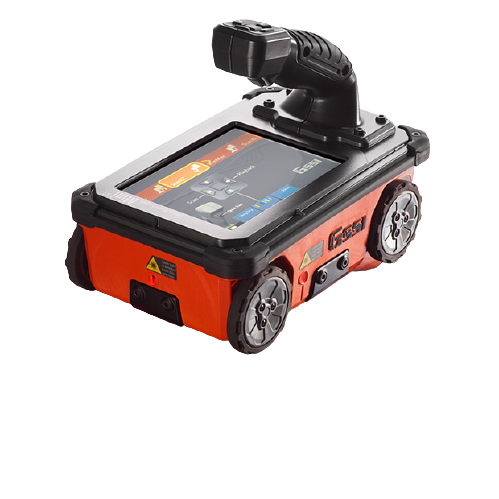RainierGPR Service Areas: Where We Provide Premier Concrete Scanning
RainierGPR Service Areas: Where We Provide Premier Concrete Scanning
Blog Article
Concrete Scanning: A Crucial Step In The Direction Of Ensuring Architectural Stability and Security
In the world of construction and facilities upkeep, the significance of concrete scanning can not be overemphasized. This careful procedure holds the crucial to introducing prospective risks hidden underneath the surface of apparently strong frameworks. By utilizing advanced modern technology and methodologies, concrete scanning acts as a crucial tool in guaranteeing that the integrity and safety of structures and bridges are promoted to the highest criteria. Nevertheless, beyond its surface-level effects, the role of concrete scanning expands much deeper than satisfies the eye.
Relevance of Concrete Scanning
Concrete scanning plays an essential function in ensuring the structural stability and safety of structures and infrastructure jobs. By making use of innovative innovations such as ground-penetrating radar (GPR) and electro-magnetic induction, specialists can non-destructively inspect concrete structures to spot prospective issues, voids, embedded objects, and support format. This procedure enables very early discovery of abnormalities that could compromise the stability of a framework, stopping pricey problems and making certain the safety of residents.
Concrete scanning is specifically essential during the planning and building stages of a task. Prior to boring, reducing, or coring into concrete, scanning assists determine the accurate places of rebar, post-tension cables, and other embedded elements, reducing the risk of unintended hits that can lead to architectural weak points. Additionally, concrete scanning help in quality assurance by validating the thickness of concrete covers and detecting any kind of disparities that might affect the overall resilience of the structure. Inevitably, purchasing concrete scanning services is not just a positive step to mitigate dangers however also a basic action towards maintaining the long-term safety and security and stability of buildings and facilities.
Modern Technology for Concrete Evaluation

Advantages of Very Early Detection
Timely discovery of structural problems can substantially minimize risks and guarantee the long life of construction jobs. By identifying possible issues beforehand in the building process, stakeholders can take positive steps to resolve issues prior to they rise into bigger and much more pricey troubles. Among the vital benefits of very early discovery is the prevention of structural failings, which can pose significant safety threats and result in job hold-ups and economic losses.
Furthermore, very early discovery enables timely repair services and upkeep, which can help prolong this contact form the lifespan of the structure. By dealing with problems without delay, building groups can stay clear of costly fixings and even the need for early replacement of structural components. This aggressive technique not only saves money and time but additionally improves the total security and longevity of the building and construction job.
Additionally, early discovery can enhance job preparation and decision-making by offering stakeholders with beneficial insights right into the problem of he has a good point the structure. Armed with this details, project supervisors can make informed selections relating to construction materials, techniques, and timelines, causing much more reliable and effective project end results.
Making Sure Architectural Stability
Making certain the architectural security of a building and construction job is extremely important to its safety and security and longevity. Concrete scanning plays an essential duty in making certain architectural security by discovering prospective problems such as gaps, delamination, or reinforcement rust that can endanger the honesty of the framework over time.
By using advanced scanning modern technologies like ground-penetrating radar (GPR) and electromagnetic induction, construction specialists can non-invasively examine concrete structures to determine locations of worry below the surface area. This aggressive technique enables the early discovery of issues or weaknesses, making it possible for timely repair services or support to avoid structural failures.
Normal concrete scanning during various building and construction phases and throughout the life cycle of a structure can aid maintain its stability, alleviate threats, and make certain the security of passengers. By focusing on structural security with concrete scanning, building and construction jobs can improve their resilience and longevity, ultimately contributing to better safety and longevity.
Avoiding Crucial Failures
To secure against tragic events, careful site here surveillance and positive maintenance are important in avoiding vital failings within architectural frameworks. Discovering potential issues prior to they intensify is essential to avoiding architectural failures. Executing regular examinations, such as concrete scanning, can disclose concealed problems like voids, splits, or deterioration that can endanger the integrity of a framework. By utilizing advanced scanning technologies like Ground Penetrating Radar (GPR) or Concrete X-ray, engineers can non-destructively analyze the problem of concrete and identify weak points that call for support or repair work - RainierGPR Service Areas.

Conclusion
In verdict, concrete scanning plays an important role in guaranteeing structural integrity and security by making use of sophisticated modern technology for very early detection of prospective problems. This aggressive method aids prevent crucial failures and guarantees the stability of frameworks. It is important to prioritize concrete examination as a basic technique to safeguard the longevity and safety of structures and framework.
Concrete scanning plays a crucial function in guaranteeing the architectural stability and safety and security of buildings and infrastructure projects. Additionally, concrete scanning help in quality control by validating the thickness of concrete covers and discovering any type of discrepancies that may impact the total resilience of the structure. Concrete scanning plays an essential role in making certain architectural stability by identifying prospective issues such as voids, delamination, or reinforcement rust that might jeopardize the stability of the framework over time.

In conclusion, concrete scanning plays a crucial function in making sure architectural honesty and security by making use of innovative modern technology for very early discovery of potential problems.
Report this page